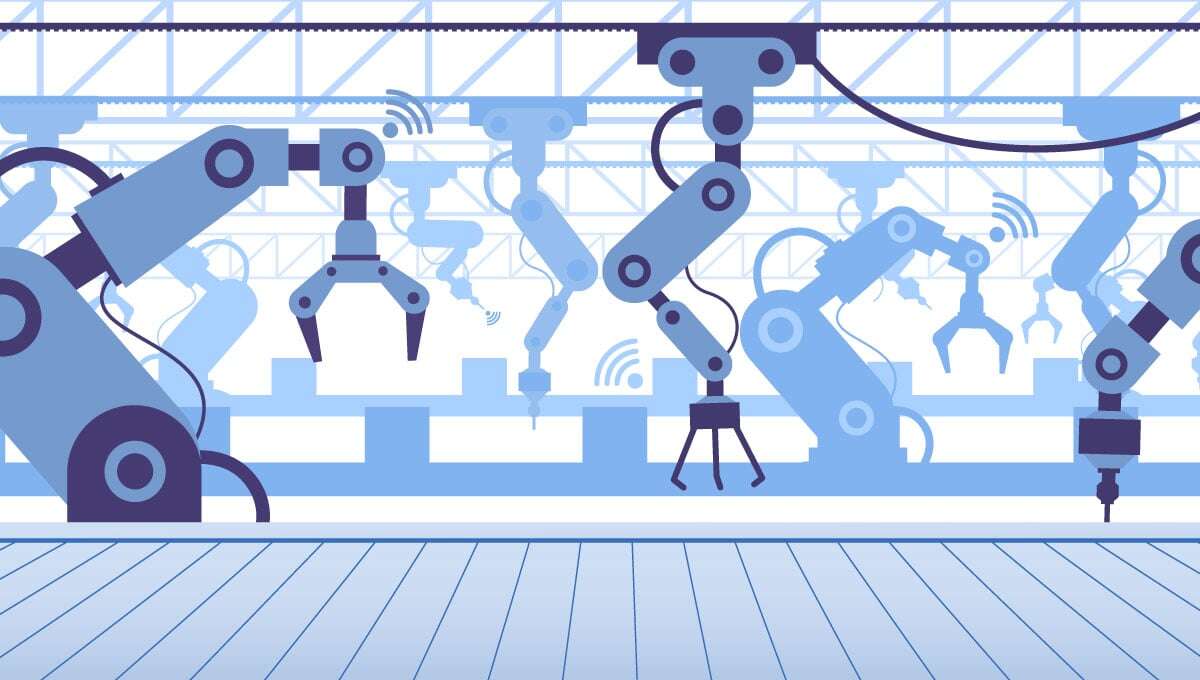
If you are suffering a skills gap today, you aren’t alone. In a September 2021 Korn Ferry survey, 77% of respondents said they had a labor shortage, with 43% saying it is hurting their business.
Automation can be a way to ease the pain, but before we jump into solutions, let’s draw a line between needing to hire because your people are leaving for new jobs versus a shortage of talent to fill vacancies. In other words, we don’t equate turnover with a skill shortage unless the talent isn’t available.
In addition, we shouldn’t include the growing number of highly skilled workers who don’t want to be employees. Hiring a contractor or freelancer shouldn’t be a sign of failure to find talent when they are the talent. It can be a very cost-effective way to engage talent.
The Automation Solution
We use technology to handle routine, repetitive tasks, so people in roles that require creative thought don’t have to do them.
Those roles aren’t only high-tech and managerial functions. They include roles like service, where people need to think creatively to solve internal or external customer problems.
Consider digital assistants to handle routine customer service tasks, but don’t skimp on training your virtual agents. Few things are more frustrating to customers than talking to a chatbot that isn’t prepared to answer their questions.
The singularity, or smarter-than-human artificial intelligence, is probably still a long way off. Still, today’s AI and robotic process automation (RPA) is relieving the workforce of ever-more-complex tasks. Now could be the right time for you to reduce the impact of your skills shortage with automation.
Robotic Process Automation (RPA)
We use scripts that emulate human processes to accomplish routine tasks in robotic process automation. It enables us to use autonomous processes in individual applications and across systems.
RPA is rule-based software that performs processes at high speed. It doesn’t make decisions; it only does what it’s programmed to do.
Intelligent Automation (IA)
When you add machine learning, natural language processing, or computer vision to RPA, you add decisions and learning to the mix, so routines can train faster and more efficiently.
Artificial Intelligence (AI)
AI is distinct from RPA because RPA is process-driven, and AI is data-driven. While RPA follows designed processes, AI recognizes patterns in data to simulate human intelligence. It enables RPA to manage complexity, so the insights in AI don’t need to wait for humans to interpret them.
Firms are adopting AI gradually, but there’s a clear trend. According to the IBM Global Adoption Index 2022, “only one in five firms today doesn’t plan to use AI.” Forty-four percent of organizations are building AI into their current applications and processes.
Thirty percent of IT pros say their firms save time with “AI and automation software and tools.” Cited in the IBM study, the percentage realizing benefits from automation include:
- “Cost savings and efficiencies (54%),
- improvements in IT or network performance (53%), and
- better experiences for customers (48%).”
The Skills Gap in Cybersecurity
Looking for security threats is one of the most tedious and expensive tasks IT performs. Finding risks in a business’ network requires manual tracking, so automating this process reduces its time.
It is essential in security response, where reducing the time between seeing a threat and responding to it is critical to a successful defense.
Looking for security threats is one of the more tedious and expensive tasks IT performs. Finding risks in a business’ network requires manual tracking, so automating this process reduces its time. This is especially important in security, where reducing the time between seeing a threat and responding to it is critical to a successful defense.
Incident responses are also an effective way to implement AI in security. This approach detects both new and known attacks without human action. These systems also learn to predict where attacks may occur before they happen.
AI Under a Shadow 
There is a dark cloud: advances in AI require more advanced skills. While AI is helping address skills gaps, it creates them with more demand. Barriers to AI adoption are limited AI skills, the high price, lack of tools, and complexity.
HR’s Role
Besides automating its tasks, HR must help other functions find the skills they need to do it. The best way to do it may be to engage an automation consulting firm or look to your Application Management Service partner to provide the talent.
The most challenging gaps to fill usually deal with complex problems requiring human understanding. Today, these jobs are in Analytics, AI, DevOps, Cybersecurity, and related roles.
You must make hiring choices more quickly when dealing with a skill shortage in your market. Candidates with hot skills often receive more than one offer in hours, so it’s essential to streamline the hiring process as much as you can.
It may be prudent to hire a consulting firm or a contractor to help you develop your automation project.
HR staff members should also ensure the company invests in people with potential, even if they aren’t yet ready for advanced roles. Sometimes, it may make sense to offer training grants to aid workers in getting needed skills and certificates.
Summary
AI and RPA can close the skills gap for many roles, especially those that involve routine tasks. Using these tools can lower your labor costs and improve your workflow.
But the primary benefit of this approach is to produce skilled teams that add more value to the firm.
Read More...
A Practical Approach to Upskilling and Reskilling Your Workforce
PhenomᵉCloud is a comprehensive technology solutions provider committed to empowering businesses to overcome challenges, enhance their workforce capabilities, and achieve superior outcomes.

Leave a Comment